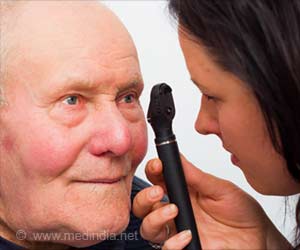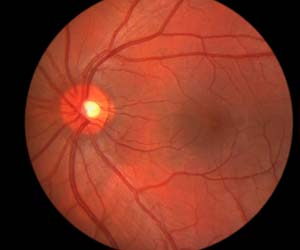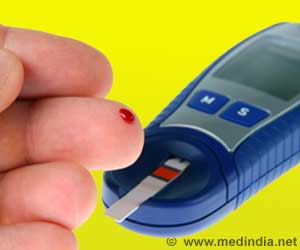New study finds that lixisenatide in the retina and the optic nerve head in type 2 diabetes patients may show promise for treating diabetic retinopathy before its clinical manifestation, reports a new study.

‘Diabetic retinopathy is one of the main vascular complications of type 2 diabetes and the most common cause of visual deterioration in adults.’
Read More..




"Inflammation causes neurodegeneration as well as microvascular abnormalities in the retina," explained lead investigator Jin A. Choi, Ph.D., Department of Ophthalmology and Visual Science, St. Vincent's Hospital, College of Medicine, The Catholic University of Korea, Seoul, Republic of Korea. "Diabetic retinal neurodegeneration can occur before the onset of clinical diabetic retinal microvascular abnormalities. Therefore, therapeutics for neurodegeneration may provide a novel interventional strategy in the window period between the diagnosis of type 2 diabetes and the onset of clinically manifested diabetic retinopathy."Read More..
Investigators analyzed and compared the anti-inflammatory and neuroprotective effects of the glucagon-like peptide-1 receptor agonist (GLP-1RA) lixisenatide in the retina and the optic nerve head with those of insulin in a mouse model of type 2 diabetes. They divided diabetic mice into three groups; GLP-1RA (LIX), insulin (INS) with controlled hyperglycemia based on the glucose concentration of LIX; and a control group (D-CON). Nondiabetic control mice were also characterized for comparison.
After eight weeks of treatment, neuroinflammation caused by type 2 diabetes was significantly reduced in GLP-1RA-treated retinas and optic nerve heads compared with untreated or even insulin-treated retinas of early-type 2 diabetic mice, showing that the outcomes are independent of the glucose-lowering effect of GLP-1RA.
"This study can provide a possible therapeutic strategy to prevent visual deterioration by using GLP-1RA in early type 2 diabetic retinopathy," noted first author Yeon Woong Chung, MD, Department of Ophthalmology and Visual Science, St. Vincent's Hospital, College of Medicine, The Catholic University of Korea, Seoul, Republic of Korea. "GLP-1RA significantly suppressed neuroinflammation in the early diabetic retinopathy, whereas insulin had little or no suppressive effect in this study."
"Retinal ganglion cells start to die even before clinical changes such as hemorrhages in diabetic retinopathy occur," commented Dr. Choi. "Thus, for better visual prognosis, we need to focus on the treatment of the retina in early type 2 diabetes before the clinical onset of diabetic retinopathy. The diabetic mouse group in our study who were treated with GLP-1RA showed significantly decreased cell death compared to those with insulin treatment."
Advertisement















